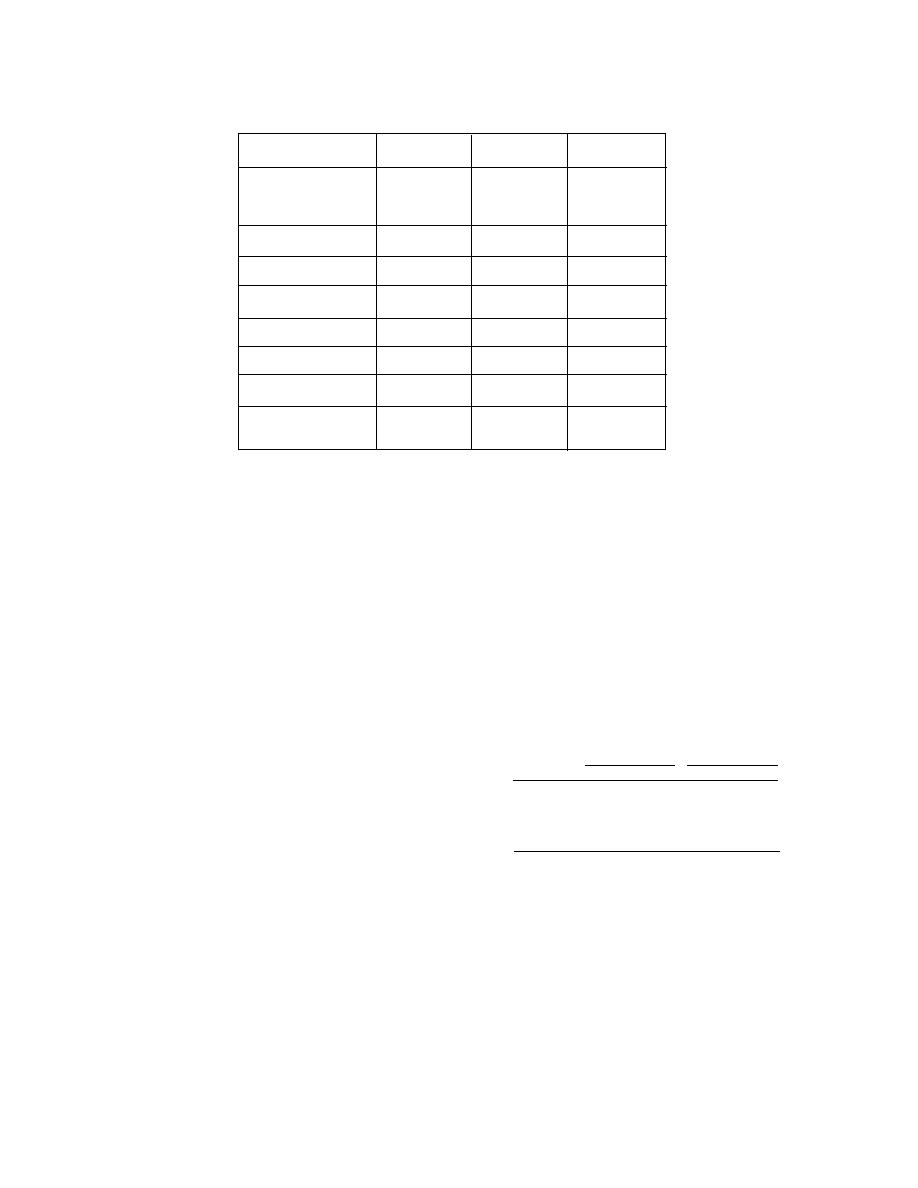
Table 3. Summary of sorption study.
Least sorptive
Next least
Other less
Analyte
tubings
sorptive tubings
sorptive tubings
NB
FEP-lined PE
PTFE
ETFE
nitrobenzene
FEP
PFA
TDCE
PVDF
FEP
PFA
trans-dichloroethylene
FEP-lined PE
ETFE
MNT
FEP-lined PE
PFA
PTFE
m-nitrotoluene
FEP
ETFE
TCE
PVDF
FEP-lined PE
ETFE
trichloroethylene
FEP
PFA
CLB
FEP-lined PE
PFA
PVDF
chlorobenzene
FEP
ETFE
ODCB
FEP-lined PE
PFA
ETFE
o-dichlorobenzene
FEP
PVDF
PDCB
FEP-lined PE
PVDF
PFA
p-dichlorobenzene
FEP
ETFE
PCE
PVDF
FEP-lined PE
PFA
tetrachloroethylene
ETFE
FEP
ETFE = ethylene tetrafluoroethylene
PFA = perfluoroalkoxy
FEP = fluorinated ethylene propylene
PTFE = polytetrafluoroethylene
PE = polyethylene
PVDF = polyvinylidene fluoride
tact time between a groundwater sample and the
mately 75% of that observed after 60 minutes, and
tubing used to pump it to the surface would be
for the less sorptive tubings (PE, PP, and PTFE),
considerably shorter than one hour. The actual
losses were approximately 60%. These values
contact time will vary depending on the tubing
were then used to estimate what the percent loss-
diameter and flow rate. For the internal diameter
es of PCE and PDCB by the four materials used in
tubing used most often in this study (0.64 cm), the
our study (polyurethane, FPVC, FEP, and PVDF)
contact time for a 50-ft well would be ∼5 minutes
might have been for contact times of five and ten
and for a 100-ft well it would be ∼10 minutes if
minutes (Table 4).
slow flow rate pumping were used (∼100 mL/
min).
Table 4. Estimated percent loss of PCE
Because there are no data for contact times of
and PDCB after 5 and 10 minutes' con-
less than an hour, we would like to estimate what
tact with selected tubing materials.*
the losses might be for these four materials for the
PCE
PDCB
two most readily sorbed analytes (PCE and
Material
5 min. 10 min.
5 min. 10 min.
PDCB) if the contact time was either five or ten
FEP
17.0
26.0
12.0
18.0
minutes. Because we were unable to model our
PVDF
5.6
8.3
16.0
23.0
data in a meaningful way for very short contact
PUR*
44.0
74.0
44.0
74.0
times, we used data of Barcelona et al. (1985) to
PVC
44.0
74.0
44.0
74.0
predict what these losses might be. Barcelona and
* Values were estimated using the data of Barce-
co-workers provide us with data on the sorption
lona et al. (1985). An example of these calcula-
of four VOCs by five polymeric tubings (silicone
tions is given in Table B1.
rubber, FPVC, PE, PP, and PTFE) after five, ten,
PUR = polyurethane
and 60 minutes' contact. We used these data to
determine what percent of the analyte was
While these values are only gross estimates,
sorbed after five and ten minutes compared with
they do indicate that for relatively short contact
the amount sorbed after 60 minutes for both the
times (five and ten minutes), sorption of the more
sorptive, flexible tubings and the less sorptive,
sorptive analytes (PDCB and PCE) by the rela-
more rigid tubings. (An example of these calcula-
tively nonsorptive tubings (FEP and PVDF) can
still be substantial (∼525%). For the highly sorp-
tions is given in Table B1.) For example, after ten
minutes, losses to the more sorptive tubings they
tive tubings (polyurethane and FPVC), approxi-
tested (silicone rubber and FPVC) were approxi-
mately 45 to 75% of these analytes could be lost in
9



 Previous Page
Previous Page
